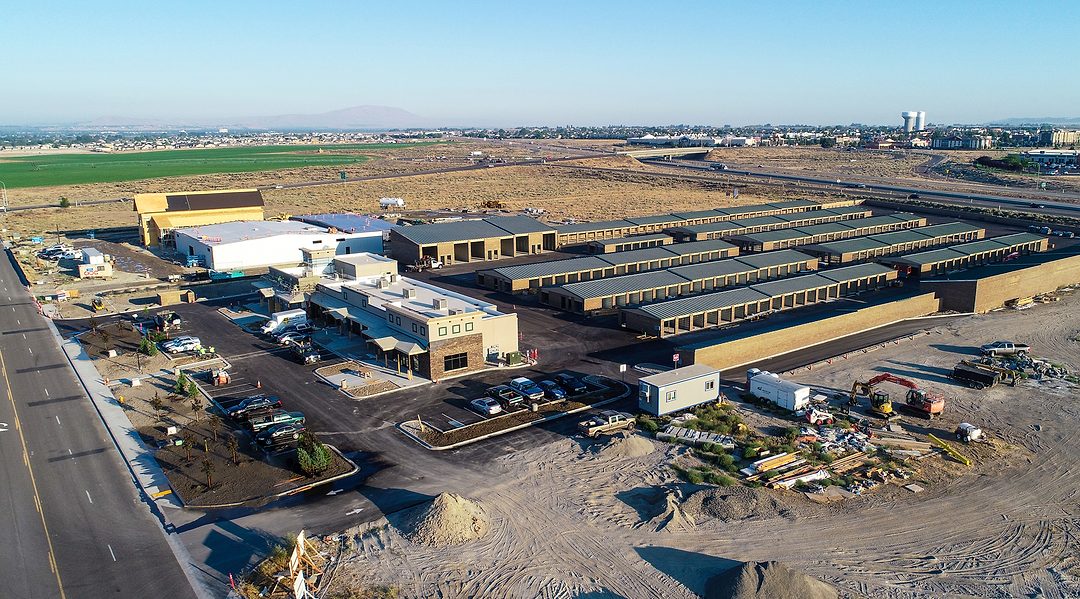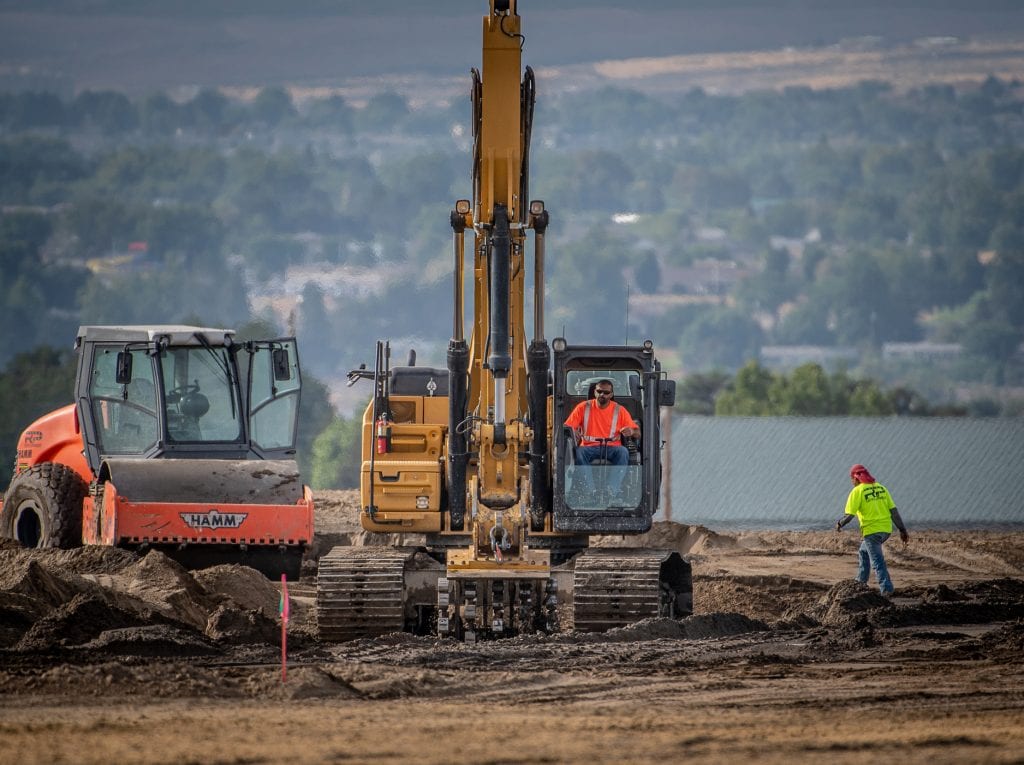
Home » City of Pasco: growth spurs economic development
City of Pasco: growth spurs economic development

October 30, 2018
The city of Pasco is running out of room. So much so that the city has asked Franklin County to expand by more than 4,800 acres north of the current city limits. The growth in population is fueling large home developments as well as new school construction in the city.
Pasco, population 73,590, also is preparing for population growth of between 20,000 and 92,000 people in the next 20 years, according to a range of low to high population projections.
As Rick White, community and economic development director at the city, sees it, even if that number is off by 20 percent, the city will still need to expand.
“We got our 20-year population forecast, and we have to plan for an additional 50,000 by the year 2038, so our 20-year forecast is roughly 121,000 people. That’s (equal to) the city of Richland,” White said. “It’s a real problem that has significant impacts — I mean significant. First of all, just raw numbers, where do you put everybody for starters? And secondly, how do you fund the infrastructure package that you need to serve them?”
Pasco’s residential building permits for single-family homes are slightly up this year, with 353 permits issued through August 2018, valued at about $94 million, compared with 343 single-family dwelling unit permits valued at about $90 million over the same period in 2017.
There are several housing development plans underway to help accommodate the projected growth. Construction is ongoing off Road 68, where developers are building about 700 houses on land previously owned by the Washington State Department of Natural Resources. White estimates that the homes will be close to completion by summer’s end in 2019.
Pasco planners also hope to expand housing near the Road 100 exit, the first exit in the city nearest to Richland off Interstate 182, north of the interstate at Broadmoor Boulevard. Currently, besides some development and a farm along the river, the area is home to a gravel pit and predominantly desert-scape. White said this is due to sewage challenges: there is no workable sewage system in the area. The city is working to change that, however.
“Right now, the city is designing and then this winter we’ll construct the main sewer truck line that goes along the river to get to the sewage plant,” White said. “We’re going to take the sewer at the river east of the bridge north under the freeway to a point on Harris Road, and that will allow the development community to extend east, west and north.”
White envisions a mixed residential area off Broadmoor, including between 4,000 and 5,000 units with the intention to increase density there, as well as some commercial development that would be accessible to these new residents by foot.
“I think there’s a way to come up with something nice and allow people to maybe walk to get a drink after dinner or a hamburger or a gallon of milk without having to get in their car and getting on Road 100 to do it,” White said.
The value of commercial permits in Pasco so far in 2018 is down slightly from this time last year, but White is not concerned. In fact, the city of Pasco’s permitting and development numbers have remained relatively consistent the past 18 years. As of August, the city issued the most permits since 2001. So far this year, one the largest commercial projects in the city is the Pasco School District’s new $27.3 million elementary school on Road 84.
The Pasco City Council recently approved a local improvement district to spur development along Chapel Hill Boulevard, which the city plans to extend and connect from Road 68 to Road 84. White estimates it is a $10 million project.
“It’s at roughly 20 percent to 30 percent designed now, so I don’t know when it will be completely designed, but construction should start on that relatively quickly,” he said.

The Pasco School District has already annexed land north of Burns Road where the planned development around Broadmoor Boulevard will be located, including plans for new elementary, middle and high schools.
So far in 2018, Pasco’s industrial sector has surged. This is, in part, due to the thriving agricultural and food industries as well as other projects in the city.
The city of Pasco has benefited greatly off of what White calls a “gamble,” in the 1990s when the city bought 14 farm circles. The city leases the land to farmers who then supply their crops to food processors in the area.
When the city bought the land, it also began to pump water used there outside of the city’s sewage system, sending it far north and treating it according to what was needed. This irrigation source is used on those farm circles, and the program is attractive to food processors looking to relocate or expand in the city.
“It dramatically lowers the cost for the processors, and it keeps that stream of wastewater out of the sanitary sewer system, which keeps the rates low for people like me who live here,” White said.
White said an irrigation equipment manufacturer based on the East Coast is considering Pasco as its West Coast location due, in part, to the program.
Food processors like Simplot Foods are expanding their facilities, too. Simplot altered its fire pump room and mechanical systems in March 2018 — improvements valued at more than $3.2 million.
The Port of Pasco, similarly, has several large industrial development projects in the mix.
Gary Ballew, director of economic development at the port, said the port is working with local hotelier Vijay Patel to build a Courtyard by Marriot near the Tri-Cities Airport on port property. The project is valued at $10 million. In June 2018, the city granted the Port of Pasco a permit to build a new hangar to house a research plane for Pacific Northwest National Laboratory. The hangar opened in early September.
“We are really interested in industrial growth and in the community identifying land for industrial development,” Ballew said.
The airport itself has witnessed and adapted to the city and the region’s growth in recent years and plans to do more. Buck Taft, the airport director, said the airport is working on taxiway improvements and has experience dealing with major growth quickly. After the airport’s expansion was complete in 2017, Taft said it can handle even more growth.
“We can expand every section of the terminal as needed, so it’s a lot easier to do,” he said.
As more people continue to move to Pasco, White said he expects growth in the residential and commercial sectors to go hand-in-hand. He said 2019 should be about the same as recent years, as the city has posted consistent and incremental growth in all sectors dating back to 2001, except for occasional spikes or dips due to the 2008 recession. In the meantime, like the rest of the region, Pasco will need to begin to look at capacity. White believes the whole Tri-City area will have to address the same question: “How long can this region sustain the kind of growth it’s seeing? And I don’t know the answer, other than we are starting to see issues now with affordability in housing,” he said.
Farmland and houses are snapped up instantly, and Pasco’s foreclosure payment program is dry because there are no foreclosed homes that people are trying to get rid of.
White said he expects the industrial development sector to continue to grow, and in the meantime, the city seeks to expand its own limits to make room for more people.
Construction + Real Estate
KEYWORDS october 2018



